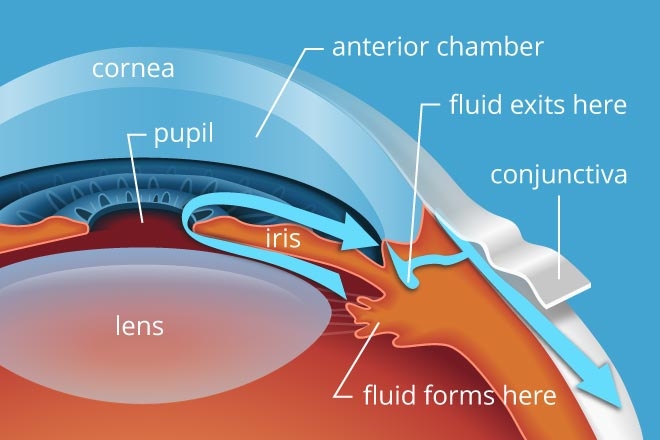ABOUT Glaucoma
Glaucoma destroys the optic nerve of your eye. Over time, it gets worse. It is commonly associated with an increase in pressure in the eye. In families, glaucoma tends to run. You don't normally receive it in your life till later.
The increased pressure in your eye, the pressure in the eye, can damage your optic nerve, which delivers photos to the brain. If damage deteriorates, glaucoma can lead in a matter of years to permanent loss of view or even to utter blindness.
Most people have no early signs of suffering from glaucoma. Visit your eye care professional frequently to identify and treat glaucoma before long-term vision loss.
Causes of Glaucoma
The fluid within your eye, known as watery mood, normally passes via the mesh-like channel of your eye. When this channel is obstructed or if the eye produces too much fluid, the fluid increases. Experts sometimes may not know what the obstruction is causing. But it may be inherited, therefore it is transferred to children from parents.
Watering or chemical injuries to your eye, severe oculine infection, clogged blood vessels within your eye, and inflammation are less common causes of glaucoma.
It's unusual, but sometimes eye surgery might lead to a different problem.
It normally affects both eyes, though in one it may be severe.
Glaucoma Types
Two primary types exist:
Glaucoma at open-angle. That's the most popular type. It may also be called broad-angle glaucoma by your doctor. The drain structure in your eye seems good, but fluid is not flowing as it should be.
Glaucoma angle-closure. In Asia, this is more widespread. It may be called acute, chronic, or narrow-angle glaucoma.
You can also be heard. Your eye is not as drained as it should because your iris and cornea are too thin in their drainage area.
This might cause your eye to suddenly increase pressure. It's also associated with far sight and cataracts, a lens haze within an eye.
Symptoms of Glaucoma
Most people have no symptoms of open-angle glaucoma. Usually, it is late in the illness when symptoms occur.
For this reason, glaucoma is commonly referred to as the "vision sneak thief." Usually, the principal indicator is a loss of vision or a periphery.
Angle-closure glaucoma symptoms typically occur sooner and more clearly. Damage can occur fast. Get medical attention at once if you experience any of the symptoms:
• Halos by the lights
• Loss of Vision
• A glittering eye
• Pain in the eye
Diagnosis of Glaucoma
Tests for glaucoma are painless and take little time. You will test your eyesight with your eye doctor. To broaden (dilute) your pupils and look at your eyes, they will utilize drops.
They will look for evidence of glaucoma in your optic nerve. You can snap pictures so that at your future visit you can see improvements. You will test your ocular pressure using tonometry.
You may also perform a visual field test to assess whether peripheral vision has been impaired. You may order specific imaging tests on your optic nerve if your doctor suspects glaucoma.
Prevention of Glaucoma
Glaucoma can't be prevented. But you can reduce your chance of eye injury if you identify it early.
These actions can safeguard your vision:
• Have periodic eye tests.
• The sooner the indicators of glaucoma are discovered by your doctor, the sooner treatment can begin.
• Every 3 to 5 years, all individuals should be examined for glaucoma.
• If you are older than 40 years old and have a family history, take a comprehensive eye checkup every 1 to 2 years from an eye doctor.
• You may have to go more regularly when you have medical conditions such as diabetes or if you are at risk of other eye illnesses.
• Get to know the history of your family.
• Ask your parents whether any had their glaucoma diagnosed.
• Follow the directions of your doctor. They may give you medications to prevent glaucoma when they discover that you have excessive eye pressure.
• Exercise. Do moderate movement at least three times a week, such as walking, or running.
• Protect your eyes.
• Use protective eyewear for sports and projects in the house.




